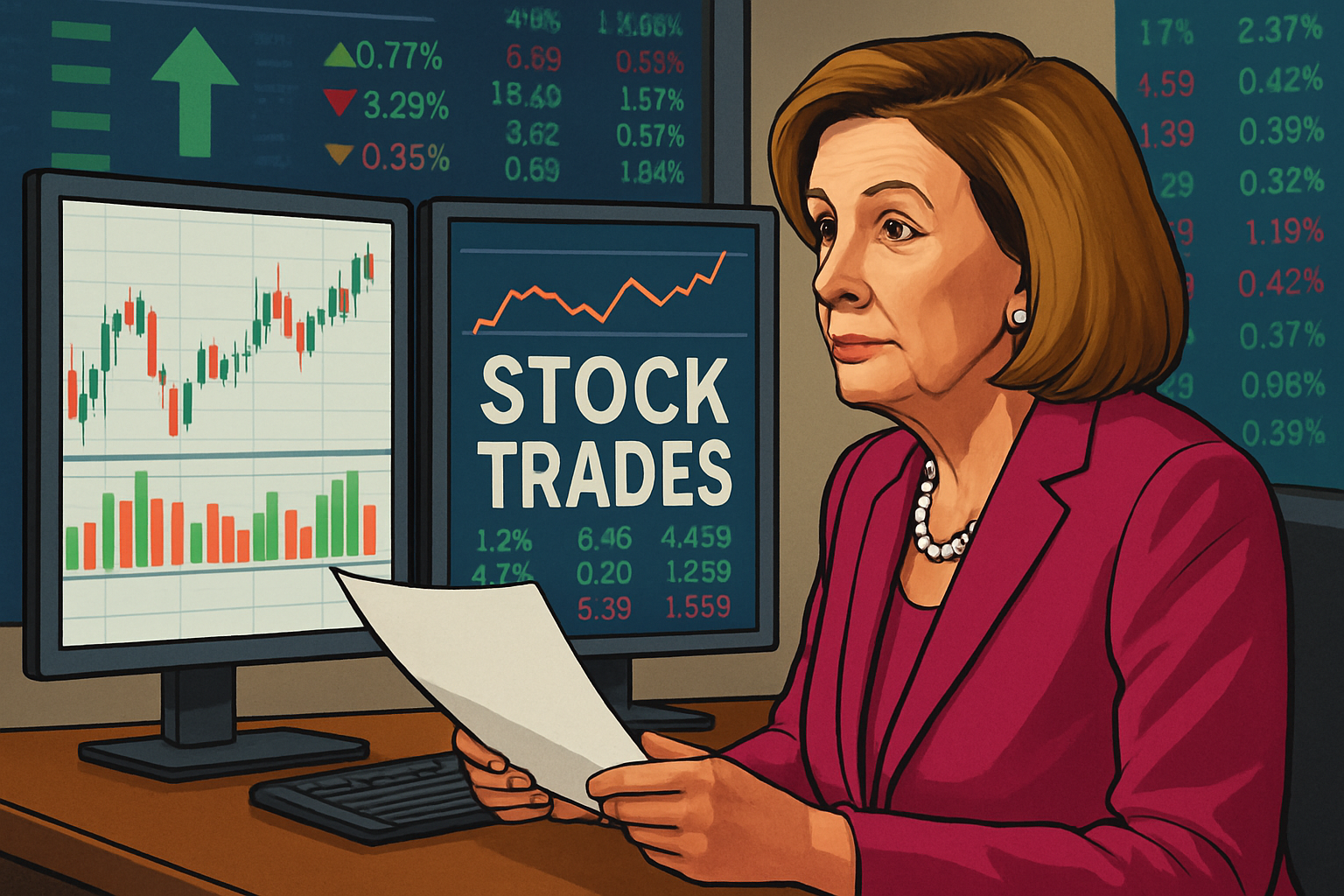
Introduction
In the world of American politics, few names spark as much discussion in both legislative and investment circles as Nancy Pelosi. As the Speaker Emerita of the U.S. House of Representatives, Pelosi’s legislative influence is well known. However, it is her family's stock trading activities—most notably those of her husband, Paul Pelosi—that have generated waves of speculation, scrutiny, and even memes across the internet. But beyond the headlines and controversy, what can everyday investors actually learn from the trading strategies, stock picks, and timing observed in Pelosi-linked disclosures? Let’s dig deep into the numbers, context, and controversy surrounding the Pelosi portfolio.
A Brief History of Congressional Stock Trading
Before examining the specifics of Pelosi’s trades, it’s important to understand the legal context. Members of Congress are required to disclose their financial transactions under the STOCK Act (Stop Trading on Congressional Knowledge Act) of 2012. While the law prohibits trading on material non-public information, it does not prohibit lawmakers or their spouses from investing in the stock market.
Pelosi herself has publicly stated that she does not personally engage in stock trading, and that her investments are managed independently by her husband. Nonetheless, each trade disclosure is watched closely by the public and the media, with some retail traders even tracking them as a part of their own investment strategy.
Dissecting Pelosi’s Stock Portfolio
Key Holdings and Trades
Over the past several years, the Pelosis have reported large trades in technology, semiconductor, and consumer companies—often those at the heart of U.S. economic and regulatory discussions. Here are some high-profile holdings and transactions:
- Apple Inc. (NASDAQ:AAPL): One of the most frequently reported stocks in the Pelosi household’s disclosures. Repeated call option purchases, often in substantial amounts, have generated speculation about their timing.
- Nvidia Corporation (NASDAQ:NVDA): Another favorite, with trades in both shares and call options preceding key legislative movements concerning semiconductor manufacturing.
- Microsoft Corporation (NASDAQ:MSFT): Several large purchases have coincided with the company’s pivotal regulatory moments.
- Alphabet Inc. (NASDAQ:GOOGL): The tech giant has appeared in several Pelosi filings, often at times when antitrust or privacy regulations are a topic on Capitol Hill.
Timing and Legislative Context
What’s remarkable about these trades is not only their size, but the timing. For instance, some of the Pelosi trades in Nvidia (NASDAQ:NVDA) occurred just months before Congress passed the CHIPS Act, which earmarked billions of dollars to boost domestic semiconductor manufacturing.
In July 2021, the Pelosis bought call options on Alphabet (NASDAQ:GOOGL) shortly before the House Judiciary Committee advanced sweeping antitrust legislation targeting big tech. While these moves were disclosed in line with the STOCK Act’s timelines, critics argue that lawmakers possess informational advantages unavailable to ordinary investors.
Public Scrutiny and Social Media Frenzy
The Pelosi trades have become the subject of intense debate and even satire. The “Nancy Pelosi Stock Tracker” bots on social platforms like X (formerly Twitter) and Reddit’s r/wallstreetbets community routinely amplify each new disclosure. Some retail investors have even adopted “Pelosi trading” strategies, mirroring reported trades under the theory that lawmakers have informational advantages or unique market insight.
Yet, it’s important to distinguish correlation from causation. A close analysis by several independent financial journalists and watchdogs has found that while some Pelosi trades have indeed outperformed the market, others have underperformed or had neutral results.
What Can Investors Actually Learn?
1. Follow the Disclosures—But Don’t Blindly Copy
While watching congressional trades can provide interesting insights, blindly copying them is no guarantee of success. Disclosures are typically reported within 30 to 45 days of the trade, meaning the market opportunity may have already passed.
2. Focus on Sectors, Not Single Stocks
Many Pelosi-linked trades cluster in sectors aligned with key U.S. policy themes—technology, green energy, defense, and healthcare. This provides a clue for investors: Pay attention to sectors that are the focus of regulatory or fiscal tailwinds, not just individual tickers.
For example:
- The CHIPS Act boosted chip stocks like Nvidia (NASDAQ:NVDA) and Advanced Micro Devices (NASDAQ:AMD).
- Infrastructure bills have benefited industrial giants such as Caterpillar Inc. (NYSE:CAT).
3. Options Trading Signals Confidence (and Risk)
The Pelosi filings often show purchases of call options, which signal a bullish view on a stock’s future but also carry higher risk. For retail investors, this highlights the potential for larger gains but also the risk of losing the entire investment.
4. Transparency Doesn’t Equal Inside Knowledge
While lawmakers are privy to a wide array of information, there is no public evidence that the Pelosis have violated insider trading laws. However, the perception of potential conflicts of interest has led to bipartisan calls for stricter rules or outright bans on congressional stock trading.
Regulatory Reform: The Road Ahead
Several bills have been introduced in Congress to ban or limit individual stock trading by lawmakers and their immediate families, though none have passed into law as of mid-2025. Pelosi herself, while once resistant, has since expressed support for stronger ethics standards.
For investors, this evolving regulatory landscape is another reason to treat congressional trades as one input among many, not an infallible signal.
Conclusion: Smart Lessons From the Spotlight
Nancy Pelosi’s stock trades have drawn public fascination not only for their timing and size, but for what they reveal about the intersection of politics and investing. For ordinary investors, the best lessons may be less about chasing headlines and more about understanding how policy, sector trends, and risk management can impact the market.
In the end, due diligence, diversification, and a skeptical eye remain the best tools for investors—regardless of who is making the trades.
Disclosure: This article is for informational purposes only and does not constitute financial advice. Investors should do their own research or consult a financial advisor before making investment decisions.
